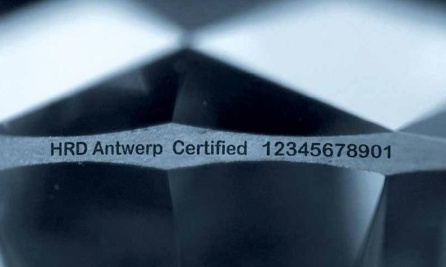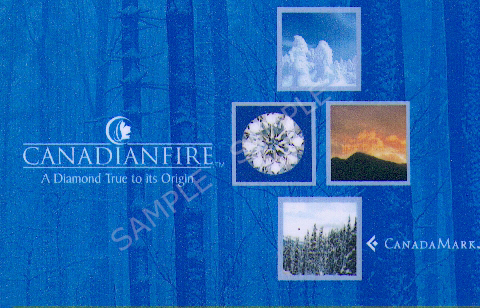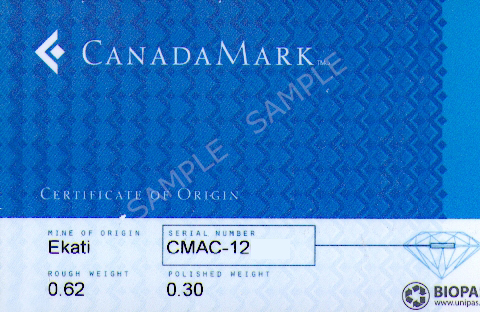Certified Diamonds
A diamond certification comes first in the purchasing of a diamond. A certificate is a blueprint of a diamond that tells you the diamond's exact measurements and weight, as well as the details of its cut and quality. It precisely points out all the individual characteristics of the stone. Certificates also serve as proof of the diamond's identity and value.
Before being purchased, many diamonds are sent to a laboratory for a comprehensive evaluation by a gemologist resulting in a diamond certification. There are a number of international gemological labs that certify diamonds and precious gems; The GIA, EGL, AGS, DCLA, IGI, and for coloured stones Auscert and Cibjo. It is important to know the different laboratories use a slightly different grading scale however they all have high standards and excellent reputations within the trade and follow the IDC rules.
The GIA (Gemological Institute of America), IGI (International Gemological Institute) and AGS (American Gem Society) are the most highly recognized diamond grading labs in the world.
A laboratory certification is not an appraisal. An appraisal seeks to establish the value of an item, mainly for insurance purposes. A diamond certificate does not evaluate a diamond's market value, only its characteristics and quality. That said, diamond certification from a reputable laboratory is invaluable in generating an accurate appraisal.
Shopping for certified diamonds allows you to make an informed choice about your diamond selections. You can compare one diamond with a particular weight and quality with other diamonds of similar weight and quality to determine which diamond is the better value.
Every diamond is unique, and there are a variety of factors which affect the price of a diamond. Focus on those factors most important to you and choose a diamond that satisfies your individual standards for beauty and value. This might be a very different diamond than someone else with a similar budget would choose.
Diamond Certification and Grading
Laboratory certification provides an independent judgment of the characteristics and quality of each diamond. This certification is called a grading report or dossier by lab. This gives the purchaser added confidence that the diamond received is as described by the seller. The diamond certificate is also valuable for insurance purposes, as it provides a professional, independent evaluation of the diamond.
| GIA | SCAN.D.N | CIBJO | HRD |
| FL (flawless) | FL | Loupe Clean (Free from inclusions & bearding) | Loupe Clean (inclusions do not exceed 5 microns) |
| Internally flawless | IF | ||
| VVS1 (very very slightly included) | VVS1 | VVS (VS1,VS2) Very very Small inclusions, very hard to find with a 10x loupe | VVS1-VVS2. Inclusions visible through table have average sizes of 12 microns (VVS1) 25 microns (VVS2) larger when visible through other facets |
| VVS2 (very very slightly included) | VVS2 | ||
| VS1 (very slightly included) | VS1 | VS (VS1, VS2) Very small inclusions which can hardly be found with a 10 x loupe | VS1-VS2 Inclusions visible through table have average sizes of 40 micron (VS1) 70 micron (VS2) large when visible through other facets |
| VS2 (very slightly included) | VS2 | ||
| SI1 (slightly included) | SI | SI Small inclusions easy to find with a 10x loupe, not seen to the naked eye through the crown side | Si Inclusions visivle through table have average size of 150 microns |
| SI2 (slightly include) | SI2 | ||
| I1 (imperfect) | P1 | PI (Pique1) Inclusions immediately evident with a 10x loupe, difficult to find with the naked eye throughthe crown side, not impairing brilliancy | PI, Inclusions which are visible through the corwn side have average sizes of 0.5mm |
| I2 (imperfect) | P2 | PII (Pique II) Large or numerous inclusions eastily visible to the naked eye through the crown side and which slightly reduces brilliancy | P2, Inclusions have average sizes of 1.5mm which slightly reduce brilliancy |
| I3 (imperfect) | P3 | PIII (Pique III) Large or numerous inclusions eastily visible to the naked eye through the crown side and which slightly reduces brilliancy | P3, Inclusions have average sizes of 3mm or larger which reduces brilliancy |
| 1 Micron = 1/1000 of 1mm | Stones large then 0.47cts | Subdivisions of VVS and VS into two further subdivisions done only for sizes 0.47cts and larger |
Following is an overview of what each document contains:
Diamond Grading Report
The diamond grading report includes the following information;
· Date: The date the diamond was examined by the lab
· Report Number: The unique tracking number assigned to each diamond and report.
· Shape of diamond (e.g. brilliant round, princess square )
· Measurements: to the nearest one-hundredth of a millimeter
· Carat Weight: to the nearest one-hundredth of a carat
· Depth %
· Table %
· Girdle Thickness
· Culet Size
· Polish Grade
· Symmetry Grade
· Clarity Grade
· Color Grade
· Cut Grade: for round diamonds only
· Fluorescence Grade
· Laser Inscription: Notes the content of any inscription present on the girdle of the diamond.
· General Comments: Additional identifying characteristics or features not otherwise represented in the report.
· Diamond Plot: showing all inclusions and blemishes found.
· Proportion Diagram: A graphic representation of the diamond's actual proportions.
· Security Features: A variety of document security features (such as hologram, security screen, micro-print lines) which confirm the authenticity of the report.
Diamond Dossier
For smaller diamonds, an abbreviated form of the Grading Report is often used, which is called a Dossier. This condensed report offers the same information as the GIA Grading Report listed above, without the diamond plot, since the individual flaws or inclusions are less important in smaller stones.
Every diamond that has been issued a Diamond Dossier will have the report number laser inscribed on the diamond's girdle. This added security allows the purchaser to confirm the identity of the diamond at all times.
Laser Inscription
Most internationally recognized laboratories will offer laser inscription services. Laser inscription is minute writing, not visible to the naked eye that is applied on the girdle of the diamond. The main purpose is to be able to identify the diamond.



This will ensure that the diamond matches the certificate and will reduce the possibility of your diamond ever being switched. The safest laser is a cold laser system which is guaranteed not to damage the diamond and which has no effect on the purity.


 Sign up for special offers and news
Sign up for special offers and news